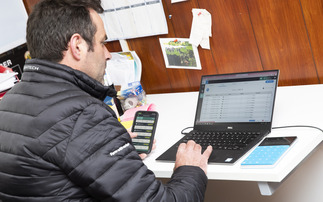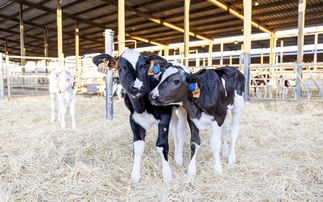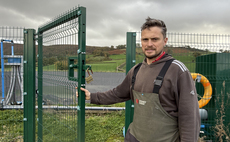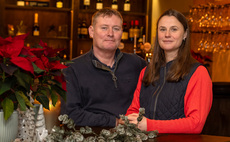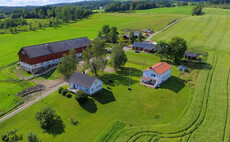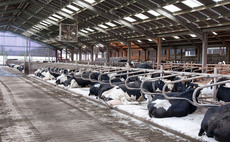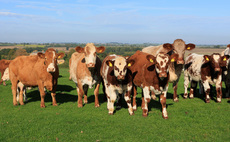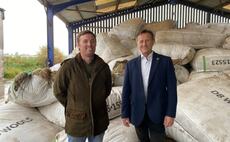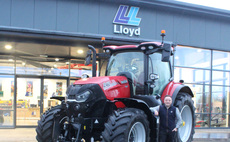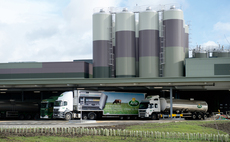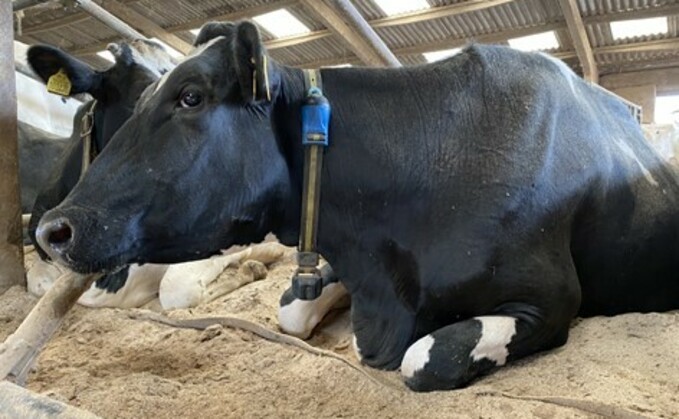
For the Chinns of Causeway 51AV��Ƶnear Shaftesbury in Dorset, upgrading their heat detection system to a fertility and rumination monitoring system has enabled them to improve their herd's fertility scores and to reduce the potential for health-related issues to impact milk production.����
Sam Chinn farms in partnership with his mother, Mary, at Causeway 51AV��Ƶnear Shaftesbury in Dorset. Their pedigree Holstein-Friesian 170-cow herd calves all-year-round, with 110 youngstock reared on a separate unit four miles away from the main holding.��
Ten years ago, Sam installed the herd's first heat detection system which successfully helped to improve conception rates and contributed to a reduction in the herd's calving interval: "A decade ago, we were milking 130 cows and producing an average of 6,000 to 7,000 litres per lactation," Sam describes. "Today we're milking 170 cow and producing 9,500 litres per lactation from a partial mixed ration, with constituents at 4.5% butterfat and 3.3% protein. We've almost doubled our milk output with less than a third more cows thanks to a greater focus on nutrition and health protocols, but it's the herd monitoring system which has made the biggest single difference to the way we manage the cows."��
Prior to installing the farm's first-generation heat detection system - a collar-based Allflex Heatime system - the herd's calving index was 430 days. Today that figure is as low as 383 days thanks to more timely inseminations with the herd achieving an average first service to conception rate of 45%: sexed semen is used on the herd's maiden heifers and better cows, with an Angus bull sweeping the heifers..��
"The original system only allowed us to identify cows for insemination when they came into the parlour and didn't allow us to monitor for signs of poor health," Sam continues. "We also only had 60 collars which meant we were forever moving collars from one cow to the next once the first was confirmed to be in-calf.��
"It worked well in terms of helping us to spot quiet and silent heats, but it didn't allow us to build up a complete picture of how each cow was performing throughout her subsequent lactation and following transition. So, when the Heatime collars came to the end of their working life, we decided to upgrade to SenseHub and used a productivity grant to subsidise 40% of the cost of purchasing one collar per cow."��
The new collars - installed three years ago - sit high on the left-hand side of the cow's neck where they detect subtle activity and behavioural patterns associated with fertility status and rumen function to determine when cows are in heat, when they are showing irregular heat patterns, or to provide an early warning of distress or ill health.��
"The herd is managed as one group, with cows going out to grass during the day and housed at night. We carry out all of the herd's artificial insemination in house and spend a significant amount of time and money selecting sires to improve the herd's fertility indices, fat and protein production and feet and legs," Sam explains. "It's therefore essential we know exactly when each cow should be inseminated to maximise her chance of conceiving. We also use the SenseHub system to highlight any cows which might be stressed and to fine-tune our pre- and post-calving management protocols."��
To reduce cases of milk fever, all third lactation cows and older are routinely administered a calcium bolus at the point of calving. "We'll also give a bolus in the early stage of calving to any cows which SenseHub highlights as having low rumination during the latter stages of her dry period," Sam adds. "The monitoring system acts like a second set of eyes which spots the early signs of poor health far earlier than we could and enables us to take the necessary preventative steps to ensure any underlying issues don't develop into a bigger problem."��
The SenseHub data is also used to validate the herd's post-natal checks which herd manager, Keith Towers, performs as matter of routine at 7-14 days post-calving: "Each freshly calved cow is checked for the tell-tale signs of a white discharge which can be indicative of endometritis," Sam explains, "with Keith also using a blood ketone test strip to assess how well she is recovering after calving. We also look at each cow's activity and rumination data on the SenseHub app on our phones to work out if any cows are below par - either a result of a dietary imbalance or because of something more sinister such as an underlying infection or sub-clinical mastitis - so that we can treat her accordingly and get her back to full health as soon as possible.��
"Without SenseHub we'd still spot the majority of sick animals before it was too late, but it might be a couple of days later before we saw any noticeable symptoms. By then the damage might already be done and it'd take a lot longer to get the cow back into prime condition."��
The farm's heifers are still monitored for heats using a basic ‘walk and chalk' system. "Historically we've seen conception rates as high as 85-90% in our heifers, but that was when we had more time available to make visual observations," Sam continues. "As the herd has grown, Keith and I have been forced to reduce the amount of time we spend at the heifer unit which means our fertility scores have suffered a little.��
"I'd therefore like to use SenseHub to monitor the heifers as well, but they are housed off-grid. Thankfully Allflex now has a solar powered version of SenseHub which means we might soon be able to see our heifer fertility scores return to their former glory."��
PHOTOS��
��
Sam Chinn uses the SenseHub system to fine-tune his herd's fertility and health protocols.��
��
The upgraded collars monitor heat activity and rumen function, providing valuable fertility and health feedback throughout the lactation and subsequent transitional phase.��
��
Dan Finchett (left) of Allflex discusses the merits of heat and rumination monitoring for cows at grass.��






